What’s Happening Here?
I thought I’d start the newsletter off with a special holiday challenge. Admittedly, the challenge has nothing to do with Thanksgiving, but I wanted to see how many of you could get a turkey after successfully completing the challenge. It’s more of a bowling reference than a Thanksgiving one. When you get three consecutive strikes in bowling it’s called a turkey; therefore, if you answered this and the previous two challenges correctly for three in a row, I’m going to call it a turkey. Sound like fun? Let’s see if you can do it.
Take a look at these rudbeckia.
As you can see, several leaves appear disformed and are cupping upwards. I can think of a few possibilities, can you? Are the deformed leaves caused by environmental factors, plant growth regulators, broad mites, herbicides, nutritional disorders or something else?
Please take your time to finalize your answer to this week’s challenge while you enjoy the newsletter. I look forward to seeing if you can correctly determine ‘What’s happening here?’
If you’re interested in achieving turkey status and don’t recall the previous two challenges, here’s the links to those newsletters.

Chrysanthemum Mammoth
Consumers are crazy about fall mums, unfortunately the majority of them are not cold hardy. For the perennial enthusiast out there, the Mammoth series offers unrivaled cold hardiness to this class. How hardy are they? All the way to Zone 3.
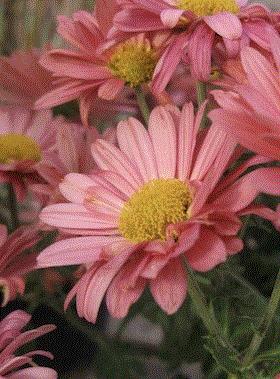 |
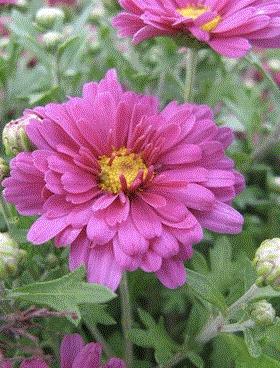 |
|
Mammoth Coral Daisy |
Mammoth Lavender Daisy |
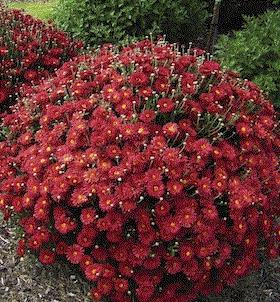 |
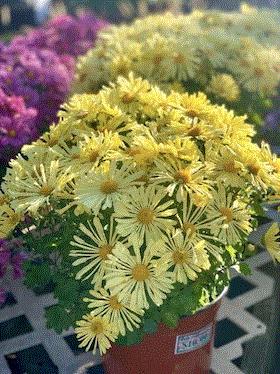 |
|
Mammoth Red Daisy |
Mammoth Yellow Quill |
This series grows 24 to 36 inches tall with a similar spread. I believe they received their name due to the combination of extreme cold hardiness and their mammoth size. Unlike traditional annual garden mums, perennial mums are much harder to come by. I see
Growing Colors offers four cultivars of the Mammoth series:
Coral Daisy,
Lavender Daisy,
Red Daisy and
Yellow Quill. Click the cultivar names to learn more about these perennial garden mums.
Looking Ahead to 2023
Can you believe it’s already the end of November? 2022 is nearly over and before you know it the New Year will be here. Shortly after that many of us growers will begin ramping up production and filling up the greenhouses for the spring sales season. Have you ever felt like you just weren’t quite ready for spring production? Let me reassure you that you’re not alone. The good news is there are plenty of things you can do now to prepare for next spring’s crops.
This week I ran across a great article written by Dr. Chevonne Dayboll and Dr. Sarah Jandricic from ONfloriculture, which is an excellent blog for Ontario greenhouse floriculture growers.
ONFloriculture contains tons of valuable information for growers. Here’s a glimpse of the great information in the article.
Spring Crop Check List
-
Make sure all your inputs are ordered. Supply chain issues are still causing product shortages and shipping delays that are affecting many industries including greenhouses. Make sure you order potting mixes, plastic trays and pots, fertilizers and production inputs well ahead of when you will need them. Consider ordering in your summer and fall crops as well and storing the materials if you can.
-
Get your preventative maintenance done. Now is a great time to schedule preventive maintenance for your boiler, irrigation and shading systems. Make sure that all motors and alarms are working before you need to rely on them. No one wants to find out that their temperature alarm failed on a cold February morning!
-
Sanitize NOW, THEN plan your disease management program. When it comes to diseases, a good clean out of your spring crop propagation and growing areas is as close to a “silver bullet” solution as we are going to get. This includes:
-
Scrub down your benches.
-
Sanitize benches AND drip lines, where organic matter, biofilm and disease spores can accumulate.
-
Use new plug trays.
-
Control fungus gnats and shore flies, as they can spread disease spores.
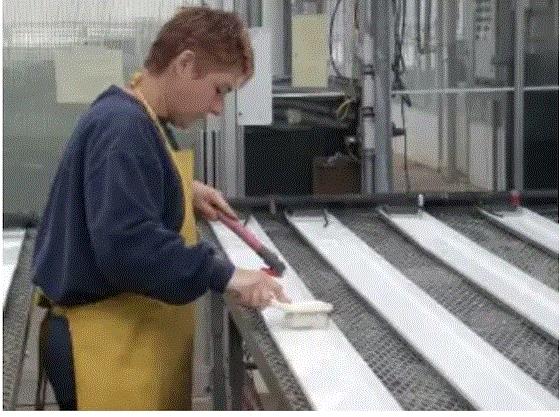
Sanitizing benches and irrigation equipment is key to starting the spring season off right. Photo credit OMAFRA.
-
Monitor pH for optimal nutrient uptake. Keeping the pH of your crops in an ideal range can help with a host of issues. To avoid common nutritional issues such as iron deficiency, it’s best to keep crops at a pH in the range of 5.5 to 5.8.
-
Know your PGR Plan. This time of year, we get lots of questions about rooting hormones and other PGR products and rates for spring liners that are about to come in the door. If you do use PGRs in the production of your spring crops, it’s best to do some reading now, and have the right products on hand. (The article includes several resources on PGRs.)
-
Prevent pests where possible. Dips aren’t just for whitefly on poinsettia! Research from the BioControl Lab at the Vineland Research and Innovation Centre has demonstrated dips can be an important weapon for reducing thrips, whitefly and spider mites in spring crops. (Read the article for plant safety and efficacy information on several potential cutting dips.)
-
Plan your Bio Program. Advanced planning can help you decide where you’re spending your dollars, and where you can potentially cut back based on last year’s performance. It can also help you plan for contingency issues (i.e., what are you going to do if your planned biocontrol program isn’t working?). See the article for great information on biological controls for aphids, mites and thrips.
Unfortunately, the article was too long and contained numerous links to resources and videos to post it in its entirety here. Fret not, I have your back, click
HERE to read the “Looking Ahead to 2023: Preparing for Spring Crops” ONfloriculture article.

Improving Your Bottom Line with Biologicals
GrowerTalks and Pro-Mix are hosting a FREE webinar on Thursday, December 1, 2022 at 1:00 p.m. Eastern/Noon Central covering the topic of how biologicals can be used to improve your bottom line.
Troy Buechel (Premier Tech Grower Services) will guide attendees through the wonderful world of biological active ingredients and show how they can be used to obtain substantial benefits. This should be an interesting and highly informative webinar. Here’s the details:
Date: Thursday, December 1, 2022
Time: 1:00 p.m. Eastern/Noon Central
The Answer Is…
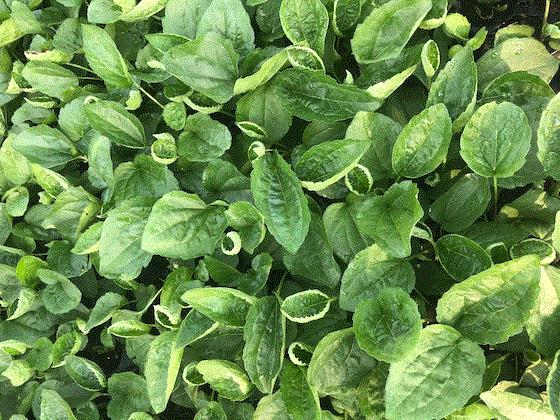
At the top of the newsletter, I shared the image above and asked if you could succeed in correctly diagnosing this on top of the previous two challenges to earn yourself a turkey just in time for the big holiday.
Here’s a look at a different rudbeckia plant with the same problem that might better show the cupping leaves.
There are several possibilities but only one correct answer. The ones that came to my mind are the deformed leaves were caused by environmental factors, plant growth regulators, broad mites, herbicides, nutritional disorders or perhaps virus. If you answered herbicide injury you correctly solved this week’s challenge.
Unfortunately, cases like this come up from time to time (even with growers with lots of experience using herbicides). Herbicide injury can occur from direct contact with the herbicide via direct contact from the spray solution, unintentional spray drift, volatilization and from contaminated irrigation sources.
In the case of the rudbeckia, a post emergent herbicide containing 2, 4-D, MCPP and dicamba was applied around the production houses to control broadleaf weeds. Using laboratory analysis, dicamba was detected in the plant tissues. Upward cupping is consistent with the symptoms you’d expect from dicamba.
Now the question is ‘how did it get there?’ Water samples from the irrigation ponds were sent to the laboratory to detect the presence of herbicides. Surprisingly, the ponds contained ALL of the herbicides that were applied on the property. Some herbicides were at low levels that would likely not cause a problem to crops but others were high enough to potentially lead to crop injury with low level doses being applied with each irrigation. With a known source and herbicide levels confirmed in both the plant tissue and the water, it was determined that the irrigation water was the source of the herbicide exposure to these rudbeckia.
Did you correctly solve this week’s challenge? If you did and you also answered the previous two challenges correctly, you answered three in a row and achieved turkey status. Turkey or no turkey, I’d like to thank you for being a loyal Perennial Pulse subscriber and wish you a happy Thanksgiving.

Helpful Guidelines
Since herbicides ALWAYS carry some risks, here are some guidelines to improve the safety to your crops.
-
ALWAYS follow the label.
-
Avoid making applications when there are wind gusts or the wind is blowing more than 10 miles per hour.
-
Use low pressure and large droplet sizes to reduce the potential for spray drift.
-
Use a deflector around the spray nozzle (hooded sprayers) when making applications close to crops.
-
Avoid making applications just prior to rain events. This will prevent runoff into irrigation sources.
-
To decrease volatilization, do not apply herbicides during or prior to hot, dry (low humidity) or completely still conditions.
Thanks for reading this edition of Perennial Pulse. My email is paul@opelgrowers.com if you have any comments, article suggestions or if you'd just like to say hello.
Paul Pilon
Editor-at-Large—Perennial Pulse
Director of Growing—Opel Growers
This email was received by you and 35,125 other fine subscribers!
If you're interested in advertising in Perennial Pulse, contact Kim Brown ASAP and she'll hook you up.